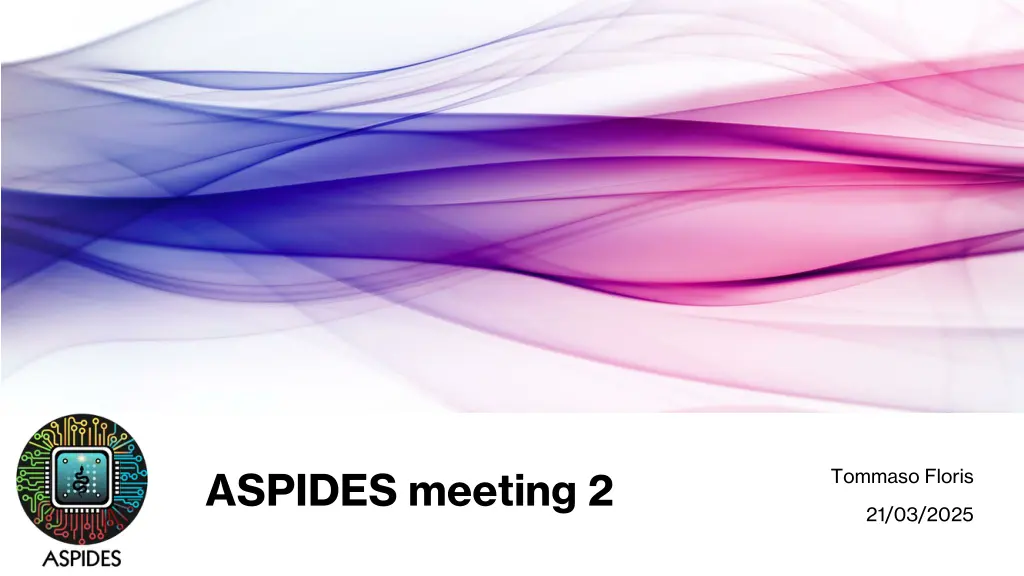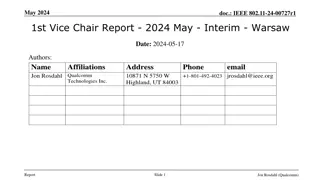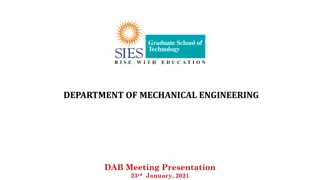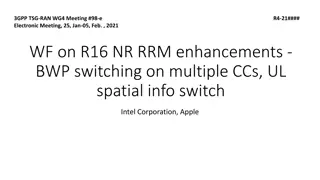
Advanced Features of ASPIDES Matrix for Photon Counting
Explore the cutting-edge functions and layout of the ASPIDES matrix, including photon counting, ToA identification, spurious event rejection, and array organization. Discover how the 2x2 pixel clusters and AND tree contribute to efficient signal processing in this innovative system.
Download Presentation

Please find below an Image/Link to download the presentation.
The content on the website is provided AS IS for your information and personal use only. It may not be sold, licensed, or shared on other websites without obtaining consent from the author. If you encounter any issues during the download, it is possible that the publisher has removed the file from their server.
You are allowed to download the files provided on this website for personal or commercial use, subject to the condition that they are used lawfully. All files are the property of their respective owners.
The content on the website is provided AS IS for your information and personal use only. It may not be sold, licensed, or shared on other websites without obtaining consent from the author.
E N D
Presentation Transcript
ASPIDES meeting 2 Tommaso Floris 21/03/2025
Functions of the dSiPM Count the number of photons parallel counter Identify the ToA of the first and last photons two TDCs and the ANDtree Reject spurious events time over threshold detector with programmable threshold Possibility to enable and disable the single pixel memory element inside each pixel Global signal to reset and enable the array
Overall floorplan ARRAY Last stages of ANDtree and PC AND tree TDCs Threshold detector Parallel Counter (PC)
2x2 pixel cluster Pixels organized in 2x2 clusters represent the basic building macro for the matrix Frontend SPAD region Routing region Digital logic region (dSiPM)
2x2 pixel cluster The pixel are organized in 2x2 cluster and represents the basic building macro for the matrix Frontend SPAD region Routing region Digital logic region (dSiPM) FF = 48 %
Array floorplan detail In the final array there will be 16 rows of 16 2x2 cluster
AND tree All input stimulated simultaneously Changing the pulse width of the input signals
AND tree One input at a time stimulated with a pulse signal Looking at how the pulse width changes
AND tree One input at a time stimulated with a pulse signal Looking at how the pulse width changes
AND tree All input stimulated simultaneously performing a transient noise analysis Looking at how the pulse width changes
AND tree All input stimulated simultaneously performing a transient noise analysis Looking at how the pulse width changes
AND tree performance AND2 640,8 ps AND4 412,2 ps ANDH 506,7 ps Rising delay Rising delay (Std Dev) Falling delay Falling delay (Std Dev) Pulse width (Std Dev) 12,05 ps + 23,01 fs 754,2 ps 10,43 ps + 46,12 fs 1,784 ps + 51 fs 14,35 ps + 10,64 fs 679 ps 28,77 ps + 83,93 fs 14,83 ps + 84,35 fs 13,91 ps + 20,06 fs 725,8 ps 23,19 ps + 53,85 fs 10,65 ps + 57,15 fs






















